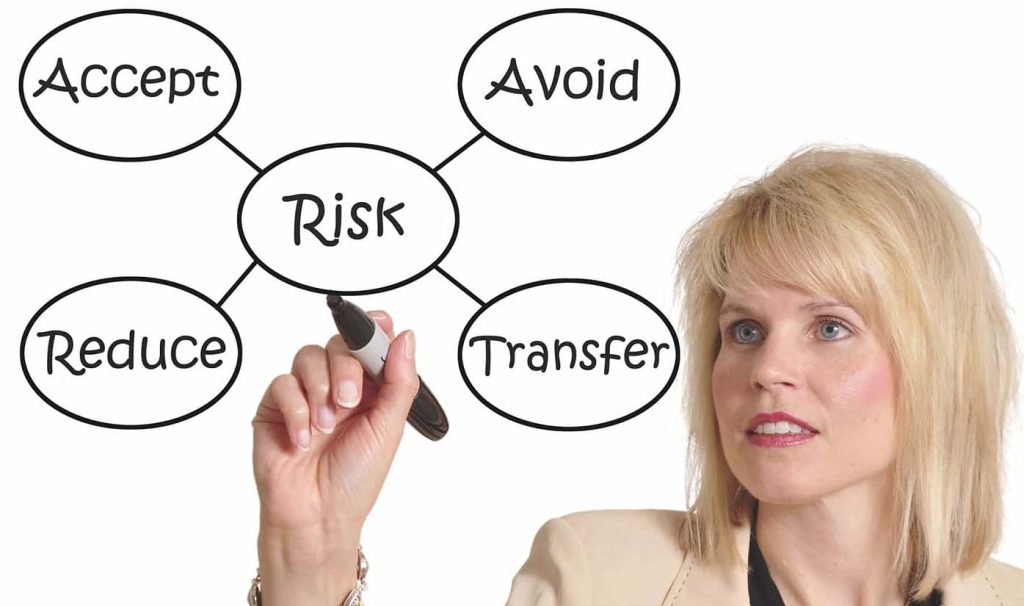Because “YOLO” Is Not a Strategy
Let’s get one thing straight: investing isn’t gambling. Or at least—it shouldn’t be. If you’re pouring your hard-earned money into the market without understanding the risk, that’s not investing, that’s wishful thinking. Risk is real, it’s everywhere, and yes—it can be managed.
So whether you’re a cautious beginner or a seasoned stock junkie, understanding how to manage risk is non-negotiable for long-term investment success. Let’s dive into how to protect your portfolio from being chewed up by volatility—and how to actually thrive through it.
🔍 First, What Is Investment Risk?
Think of risk as the possibility that your investments won’t go according to plan. It could mean your stocks dip 30%, your real estate doesn’t appreciate, or inflation eats your returns alive.
There are different types of investment risks:
- Market Risk: Stocks crash. Bonds drop. Everyone panics.
- Credit Risk: Your bond issuer goes bankrupt.
- Inflation Risk: Your money grows, but not fast enough.
- Liquidity Risk: You can’t sell fast when you need cash.
- Concentration Risk: You went all in on one asset (hello, tech stocks).
Smart investors know they can’t eliminate risk—but they can manage and reduce it.
🎯 Who Should Be Thinking About Risk Management?
Short answer: everyone. But let’s break it down.
🧓 Conservative Investors / Retirees:
You’ve built your nest egg. Now, it’s about protecting it. Low-risk strategies like bonds, dividend-paying stocks, and real estate funds are your friends.
🧑💼 Mid-Career Professionals:
You’re still building, but you’ve got something to lose. Diversification is key, with a tilt toward moderate risk/reward investments.
👩🎓 Young Investors:
Time is your superpower. You can take on higher risk for higher reward, but you still need a risk strategy to avoid costly mistakes.
💡 How to Actually Manage Risk in Your Portfolio
Let’s roll up our sleeves and get into tactics.
1. Diversification: The Golden Rule
The old cliché is true: Don’t put all your eggs in one basket. Diversification means spreading your investments across different:
- Asset classes (stocks, bonds, real estate, cash)
- Sectors (tech, healthcare, energy)
- Geographies (U.S., emerging markets, Europe)
A crash in one area shouldn’t take down your whole portfolio. This is risk smoothing in action.
Investment products that help:
- Vanguard Total Stock Market ETF (VTI)
- iShares MSCI World ETF (URTH)
- Fidelity Balanced Fund (FBALX)
2. Asset Allocation Based on Risk Tolerance
Your asset mix should reflect:
- Your age
- Your goals
- Your emotions (yes, really)
If watching your portfolio drop 20% makes you want to cry/sell everything—maybe a 90% stock allocation isn’t for you.
General Guide:
- Aggressive (20s-30s): 80-90% stocks, 10-20% bonds
- Balanced (40s-50s): 60% stocks, 40% bonds
- Conservative (60+): 30-40% stocks, 60-70% bonds
How to implement?
Use a robo-advisor like Betterment or Wealthfront. They build allocation based on your profile, and even rebalance automatically.

3. Regular Portfolio Rebalancing
Let’s say your stocks go on a bull run. Now, instead of 70/30 stocks-to-bonds, you’re at 85/15. That’s more risk than you signed up for!
Solution: Rebalancing—selling high-performing assets and reallocating to maintain your target balance.
Set a calendar trigger (every 6 or 12 months) or a threshold rule (rebalance if allocation drifts 5%+).
4. Emergency Fund = Sleep Insurance
Risk management doesn’t only live inside your portfolio. Having 3–6 months of expenses saved in cash means you won’t have to sell investments at a loss when life throws curveballs.
Best spots to park this:
- High-yield savings accounts (Ally, Marcus)
- Money market funds
5. Stop-Loss and Take-Profit Strategies (for active traders)
If you’re dabbling in individual stocks, use stop-loss orders to automatically sell a stock if it falls below a certain threshold. It protects you from catastrophic losses.
On the flip side, take-profit orders lock in gains at preset price points—keeping greed from undoing your wins.
Not for everyone, but great for more active DIY investors.
6. Use Risk-Adjusted Investment Products
Some products are specifically designed to reduce volatility:
- Low-Volatility ETFs: iShares MSCI Min Vol USA ETF (USMV)
- Target-Date Funds: Great for retirement planning. They adjust risk as you age.
- Dividend-Growth Funds: Steadier returns, plus income. (e.g., Schwab U.S. Dividend Equity ETF – SCHD)
7. Don’t Time the Market—Time In the Market
Trying to predict the perfect moment to buy or sell? It’s a recipe for disaster. Even the pros get it wrong.
Instead, use dollar-cost averaging: invest a set amount regularly (monthly, quarterly). This evens out market highs and lows and removes emotion from investing.
8. Behavioral Risk: Know Thyself
Your biggest enemy? Probably… you. Emotional decisions during downturns can wreak havoc on your strategy.
- Don’t panic sell.
- Avoid the herd mentality.
- Stay focused on your long-term goals.
Apps like Ziglu or Personal Capital can help track and nudge your behavior in the right direction.
🧠 Bonus Tip: Stress Test Your Portfolio
Ask yourself: What happens if the market drops 30% tomorrow? What if interest rates spike? What if inflation rises?
Simulating these scenarios helps you adjust before the real storm hits.
Use free tools like:
- Portfolio Visualizer
- Morningstar X-Ray
- Empower (formerly Personal Capital)
📌 Risk Isn’t the Villain—Neglecting It Is
Managing risk isn’t about eliminating all possibility of loss. It’s about building a strategy that allows you to sleep at night and grow your wealth over time. Risk is simply part of the ride, like turbulence on a flight—it might shake you up, but with the right systems in place, you’ll still arrive at your destination.
Risk management is not just for the ultra-wealthy or finance geeks. It’s for the young investor trying to make the most of their first paycheck. It’s for the growing family planning for their kids’ college. It’s for the retiree who wants peace of mind without sacrificing returns. In other words: it’s for everyone.

A well-diversified, strategically allocated portfolio is like a well-balanced diet. Too much of anything—even stocks—can throw you off track. But get the mix right, and you’re giving yourself the best possible shot at long-term success. Add to that a healthy emergency fund, regular portfolio reviews, and a cool head when markets go haywire, and you’re not just investing—you’re investing wisely.
So, whether you’re just getting started or already knee-deep in ETFs, mutual funds, and REITs, remember: risk is a tool—not a threat. It’s what separates speculation from strategy. When handled properly, risk becomes the fuel that powers your financial goals.
The best investors aren’t the ones who avoid risk entirely—they’re the ones who understand it, respect it, and use it to their advantage.
Take the time to build a plan that aligns with your personality, timeline, and dreams. Then stick to it, monitor it, and tweak it when life (or markets) change. Because ultimately, the goal isn’t just to grow your money—it’s to do so in a way that’s sustainable, intentional, and built to last.
You don’t need to be fearless to be a great investor. You just need to be prepared.
